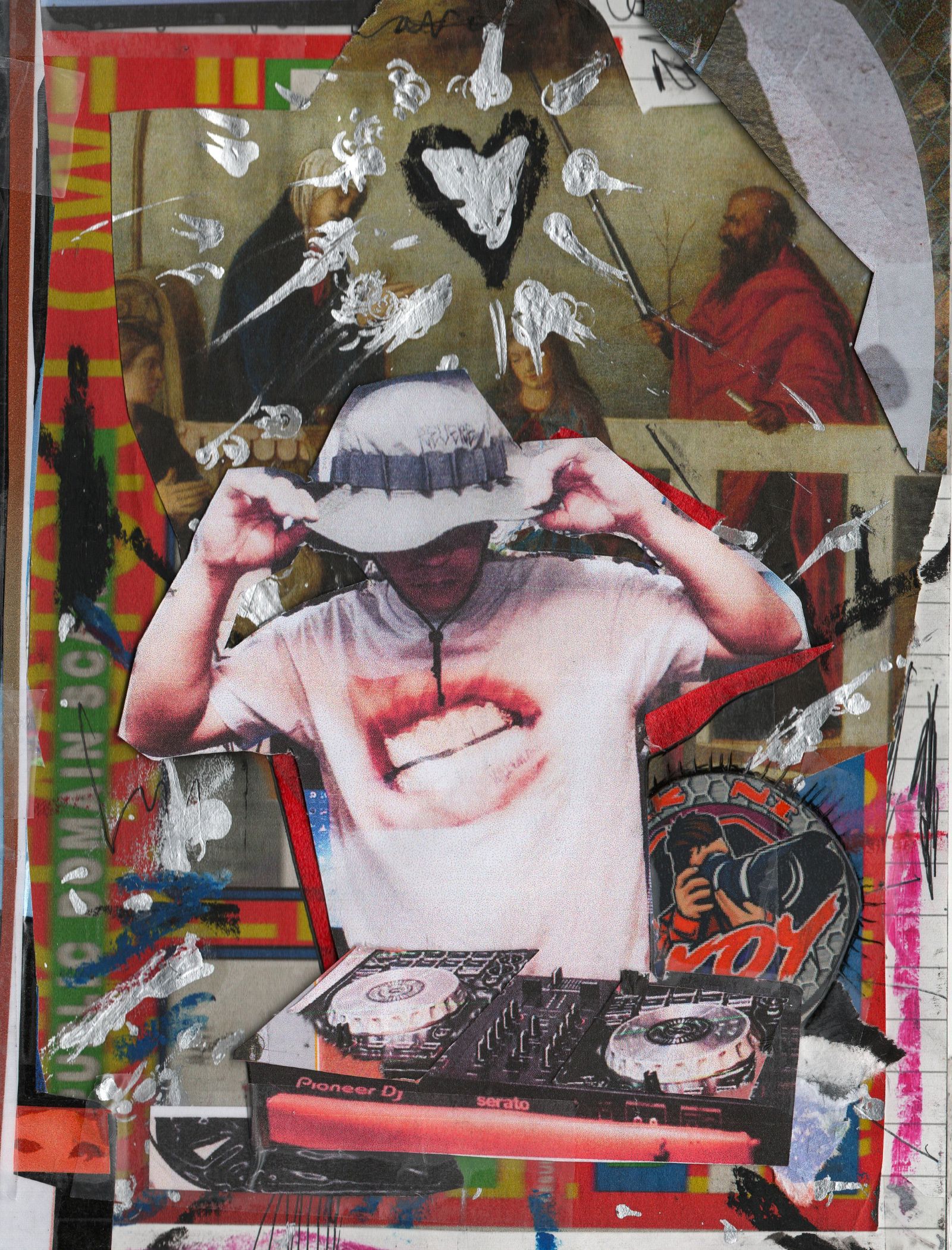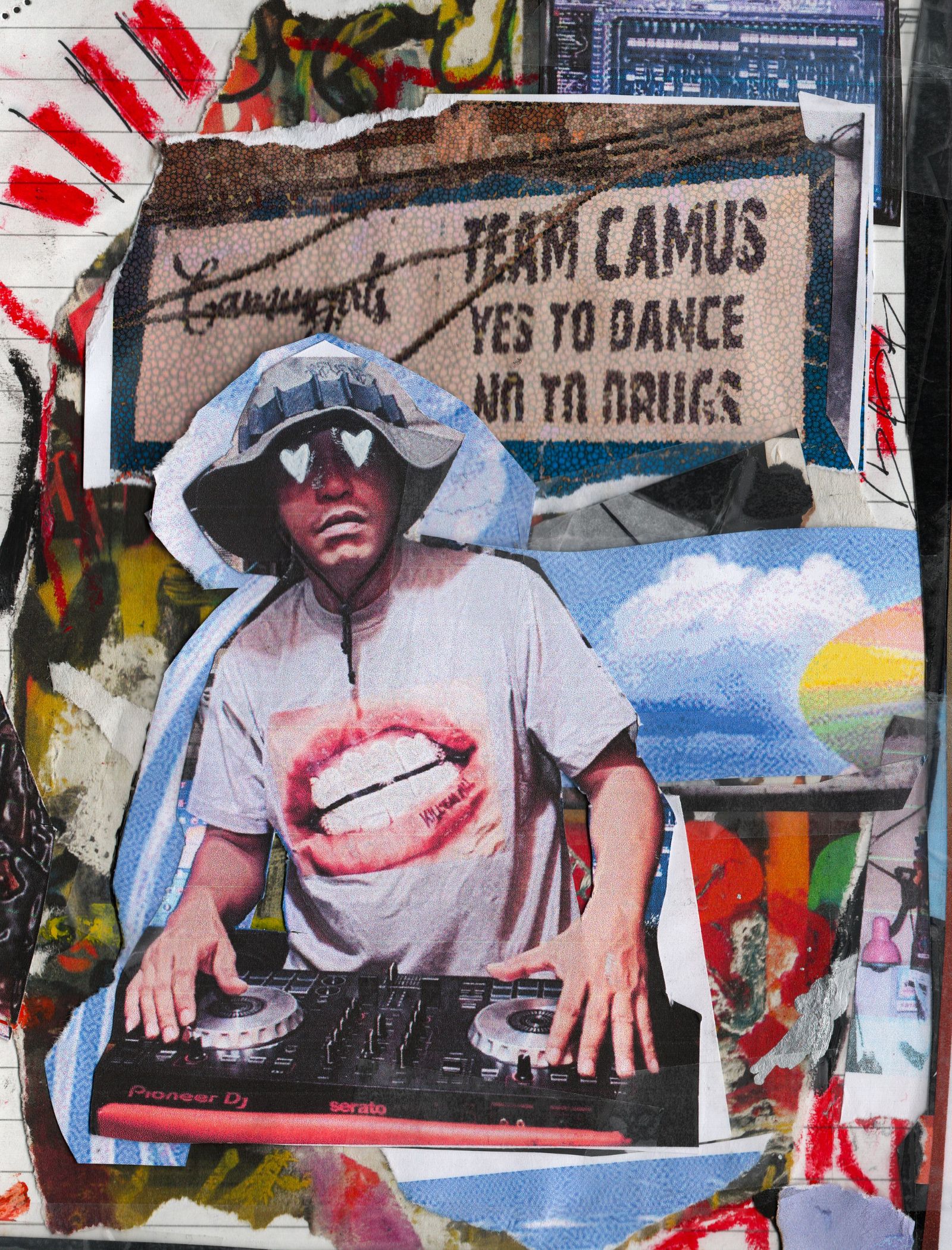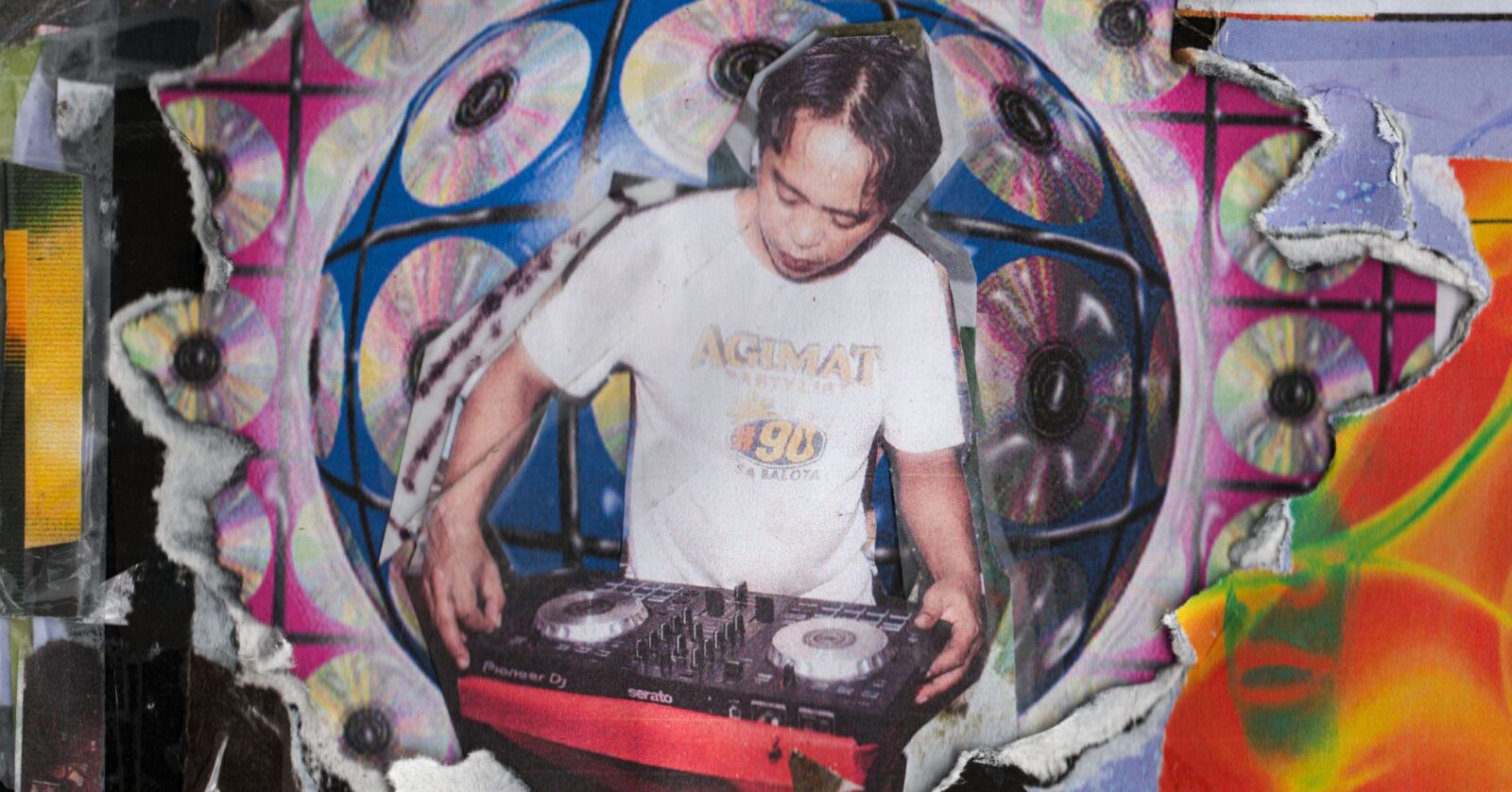The Filipino music scene has seen its fair share of colorful personalities, with each artist developing a distinctive style that has influenced Philippine pop culture in their own way.
Though many artists have been able to establish their unique sound and imagery, not many have been able to create an entirely new sonic landscape in the same vein that DJ Love (born Sherwin Tuna) has done with ‘budots’ — which has become a beloved sub-genre of electronic music all across the world.
Its blend of fast-paced beats, catchy rhythms, and humorous audio samples often reflects the local street culture, while simultaneously showcasing DJ Love’s ingenuity and creativity. With what he has achieved for the genre, DJ Love not only establishes budots as a distinctive sound within the electronic music scene, but he also carves out a significant cultural niche, capturing the essence of Filipino party life. His innovative approach and relentless dedication to his craft have also earned him the title of the “King of Budots,” making him a prominent name in the music industry.
Yet beyond its impact within the Philippine sphere, DJ Love has been making moves to introduce the world to the beloved genre. Following his impressive Boiler Room set and the rising popularity of the genre on platforms like TikTok, it seems like it is about time that both DJ Love and the genre are due to receive their flowers from the international circuit.
As the ‘King of Budots’ continues to showcase the richness of Filipino musical creativity on a worldwide scale, Billboard Philippines talks to him about his creative roots in the genre, his upcoming album, how he feels about the genre’s surge in popularity, and what he really hopes to achieve with the longstanding impact his music.
Billboard Philippines: You’re recognized as the King of Budots music –– which is a genre that you originated from your hometown of Davao City. Can you share the story behind the creation of this unique genre?
DJ Love: Isa po akong dance instructor, at nag re-remix ako ng music noon gamit lang ng cassette tape mula noong elementary pa ako. Sumasali ako din dati ng mga dance contests, like ‘yung hip-hop, cultural, or cheer dance festival o contest. So naisipan ko na mag gawa ng dance steps na hango sa lipunan namin dahil uso dito ‘yung mga gang riot at droga sa mga kabataan — kasi naintindihan ko sila. Sumasali sila sa gangs kasi gusto nilang sumikat at tawaging astig.
So instead na sa riot at gang war sila sumikat, inisip ko –– bakit hindi nalang idaan sa mga sayaw? With dance steps na hango sa away, like na nagsusuntukan o nag-aaway pero sa sayaw lang. At gusto ko rin mabago ang buhay ng mga kabataan, so gumawa ako ng ‘Yes To Dance, No To Drugs’ dahil sa karamihan ng mga na lulung sa droga or naging rugby boy. So ayun, ‘Yes to Budots Dance, No To Riots’ –– ‘yan po ang simula ng budots dance. Tapos nag-remix din ako ng mga tugtugan na babagay doon sa dance steps na ‘yun.
(I am a dance instructor and used to remix music using cassette tapes since I was in elementary school. I joined dance contests like hip hop, cultural, cheer dance, and festival dance contests. I thought of creating dance steps based on our society because gang riots and drugs were prevalent among the youth — and because I understood them. They joined gangs because they wanted to be famous and be considered cool.
So, instead of gaining fame through riots and gang wars, why not through dance, with steps that mimic fighting like punching or brawling but only in dance. I also wanted to change the youth, so I created “Yes To Dance, No To Drugs” because many were getting addicted to drugs or becoming glue sniffers. “Yes to Budots Dance, No To Riots.” That was the start of the budots dance. I also remixed music that would fit those dance steps.)
You’ve previously mentioned how Budots is a means of addressing socio-economic issues in your hometown. How do you see it as a medium for making a statement or commentary on social issues that you’ve witnessed and/or experienced?
Ang budots kasi — karamihan ng mga sumasayaw niyan ay mahihirap. Or ‘yung masa ng lipunan, yung mga sumasali din sa grupo namin may problema sa kahirapan or naluluong sa bisyo. Pero gusto nilang magbago at lumayo sa landas ng droga, kaya sumasali sila sa grup ng Camus team kasi gusto nila magbago. ‘Yun din ang gusto kong mangyari, kasi ang karamihan ng kabataan sa amin noon ay nalulong sa mga bisyo. Ganun din sa kahirapan ng buhay. Nag-stop [sila] ng school kasi hindi nila ma-afford o wala silang pera. Naligaw ng landas at sumali sila sa mga maling grupo o mga gangs.
(Most of the people dancing budots are poor or from the masses. Those who join our group often have problems with poverty or addiction. They want to change and stay away from drugs, so they join the Camus team because they want to reform. That’s what I also wanted to happen because most of the youth in our area were getting into vices and suffering from the hardships of life. They stopped schooling because they couldn’t afford it or didn’t have money. They went astray and joined the wrong groups or gangs.)

Courtesy of Copacetic PR
Your new single ‘Sabak Sa DJ’ was just released on July 17th. Can you tell us about the inspiration behind this track and what listeners can expect from it?
‘Sabak Sa DJ’ is just one example of the 12 remixes na ginawa ko. Lahat ng tugtog na ginawa ko ay may inspiration mismo sa aking paligid na nandito sa aming lugar. So ang ‘Sabak Sa DJ’ ay ang resulta ng aking inspirasyon sa Basuri horn, or sa mga horn ng mga sasakyan na ginawang music. Sumikat siya at nag-trend dun, kaya ginawan ko siya ng isang remix.
(“Sabak sa DJ” is just one example of the 12 remixes I made. All the music I created was inspired by the surroundings in our area. “Sabak sa DJ” was inspired by the Basuri horn or the horns of vehicles that sound musical. It became famous and trended, so I made it a remix.)
It was mentioned that the music video for ‘Sabak Sa DJ’ was filmed on the streets of Davao City and features the Camus Girls — who come from your initiative to empower young girls through dancing to budots. What has motivated you to start this community initiative, and how has it impacted the girls involved?
Ang Camus Girls ay yung nagpapatuloy sa budots dance na ginawa ko kasama ng mga Camus Boys ko dati. Mahirap kasi gayahin ang Camus Boys dahil nag-iisa lang talaga sila, at nag-stop na sila kasi may mga pamilya na sila tapos busy pa sila sa kanilang mga buha. So kagaya din ng gusto ko at ng Camus Boys, sila [Camus Girls] ay ang nagpatuloy sa ‘Yes To Dance, No To Drugs’ na mantra, para makalayo sa maling landas — lalo na sa mga droga at sa pagkasali sa mga gangs.
Gusto din nila ipakita kung ano ang kaya ng lalaki, kaya din nilang makipagsabayan sa sayaw. Ang budots kasi ay free style; may common dance steps din ang budots, para maitawag siya na budots. May pagka-sexy dance din, pero depende na ‘yun sa tao kung paano niya isasayaw aside sa common dance steps ng budots.
(The Camus Girls now continue the budots dance we created with the Camus Boys back then. It’s hard to replicate the Camus Boys because they were unique. They have stopped because they now have families and are busy with life. Just like me and the Camus Boys, they continue the “yes to dance, no to drugs” mantra to stay away from the wrong path, especially drugs and joining gangs.
They also want to show that what men can do, they can match in dance. Budots is free style, although it has common dance steps that define it as budots. It can be sexy depending on how one dances it aside from the common steps of budots, it depends on them… but it’s all just dance. Sometimes, they also use it to express their personality.)
Your new album ‘Budots World (Reloaded)’ is coming out this July 31, to be released through Eastern Margins. How does it feel to be releasing a record under such a renowned cult international label?
Gusto ko lang ipakita na hindi lang sa akin, kung hindi sa lahat ng producers dito sa Pilipinas na kaya din namin makipagsabayan sa mga international artists at mga producers. Iba din talaga kasi ang budots, ginawa ang budots hango sa buhay ng mahihirap. Lahat ng ginawang leads ay maririning mo sa paligid o sa mga lugar ng mga iskwater.
(I want to show not just for myself but to all producers in the Philippines that we can keep up with international artists or producers. Budots is different, derived from the life of the poor. All the leads are sounds that you hear around, or in the slums.)
You’ll be playing in London for the first time in September at the Margins United Festival. How do you feel about this upcoming performance, and what can the audience expect from your set?
‘Yung performance ko dun sa Boiler Room, gagawin kong mas maganda ng three times dahil ‘yun yung masasabi ko na best set ko talaga. Pero noon, medyo kabado ako dun kasi first time ako nasilayan ng maraming mga viewers, kaya ngayon, nasasanay na ako sa maraming tao sa audience. So bale mae-expect mo na ang set ko sa London, magiging three times na mas maganda at mas malakas.
(I will make my set in London three times better than my performance at Boiler Room, because I would say that my Boiler Room set was my best set ever. But back then I was a bit nervous since it was the first time I would be seen by many viewers. Now I’m used to having a large audience, so you can expect my set in London to be three times more powerful.)
Since you mentioned your impressive Boiler Room set with Manila Community Radio, it’s evident through its warm reception that your music has resonated with millions of Filipinos and is expanding its reach beyond the Philippines. How do you feel about the impact your music has had on people, and what do you think makes it so appealing?
For me, parang na-appreciate nila ang mga tugtog ko, at naintindihan nila kung bakit ako sumasayaw sa mga set ko. Ang budots kasi ay masaya. Pinapakita ko lang sa kanila kung ano ang feeling ng isang DJ kapag masaya siya sa ginagawa niya, at na-appreciate nila ang gawang Pinoy na ang tugtog ay hango sa paligid, sa araw-araw na mga buhay, gamit ang mga jeepney horn, ang ingay ng lizard, mga nag-aaway na tao, at lahat ng ingay sa paligid. Naiintindihan nila at natutuwa sila diyan, dahil sa pagka-Pinoy niya na paggawa.
(For me, it seems they appreciate the music and understand why I dance in my set. Because budots is fun. I just show them what a happy DJ feels like when he’s happy with he does. They appreciate Filipino-made music that reflects daily life sounds… jeepney horns, the noise of a lizard, people fighting, all the noise around.)

Courtesy of Copacetic PR
Budots has evolved from its origins in the slums of Davao to mainstream areas like Metro Manila. How do you feel about the genre’s transition and its acceptance by upper and upper-middle-class individuals who celebrate it as a niche novelty?
Kasi ang budots, ginawa sa skwater ng Pilipinas kung saan puno siya ng mga ingay sa paligid. Nakakatuwa na sinali ang ingay ng kapitbahay, mga horn ng sasakyan, o mga hayop sa paligid na nagiging trending audio sa social media, tapos sinasama pa sa mga tugtugan. Unti-unting naiintidahan nila ang kagandahan sa simpleng bagay na yun, at nakakatuwa daw. Pinoy na Pinoy kasi ang pagkakagawa ng budots.
(Because budots was created in the slums of the Philippines, in an environment full of noise, and it’s amusing to include the noise of neighbors, vehicle horns, stray animals, and trending sounds on social media into the music. They gradually understand it and find it amusing… the Filipino-ness in its creation.)
With the legacy of your music and the budots genre, what is it that you hope to achieve with your music in the future, both in terms of social impact and musical innovation?
Gusto ko lang na ang music ko ay marinig at maunawaan. Gusto ko rin na lahat ng producers ng budots sa Pilipinas ay makilala at mabigyan ng pagkakataon na marining ng buong mundo ang gawaing Pinoy. Sa totoo lang, mas marami pang mgagaling na producers dito sa Pilipinas, lalo na sa Mindanao, na naghihintay lang na ma-discover. Hindi ako magaling, marunong lang. Mas marami pang magagaling na kasama ko ang nahihintay na marinig ang kanilang musika.
(I just want my music to be heard and understood. I also want all budots producers in the Philippines to be recognized and given the opportunity to be heard worldwide. The truth is, there are many more talented producers in the Philippines, especially in Mindanao, just waiting to be discovered. I am not great, just skilled. There are many more talented people with me waiting for their music to be heard.)
*DJ Love’s responses have been translated from Tagalog into English.
Listen to DJ Love’s latest single “Sabak Sa DJ Basuri“ below:
